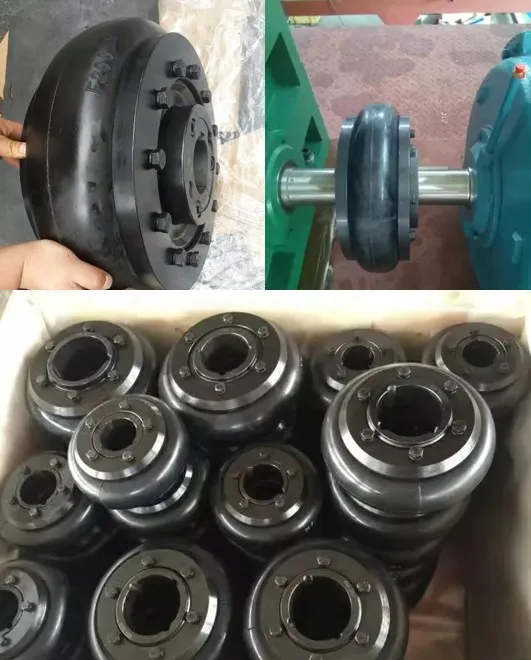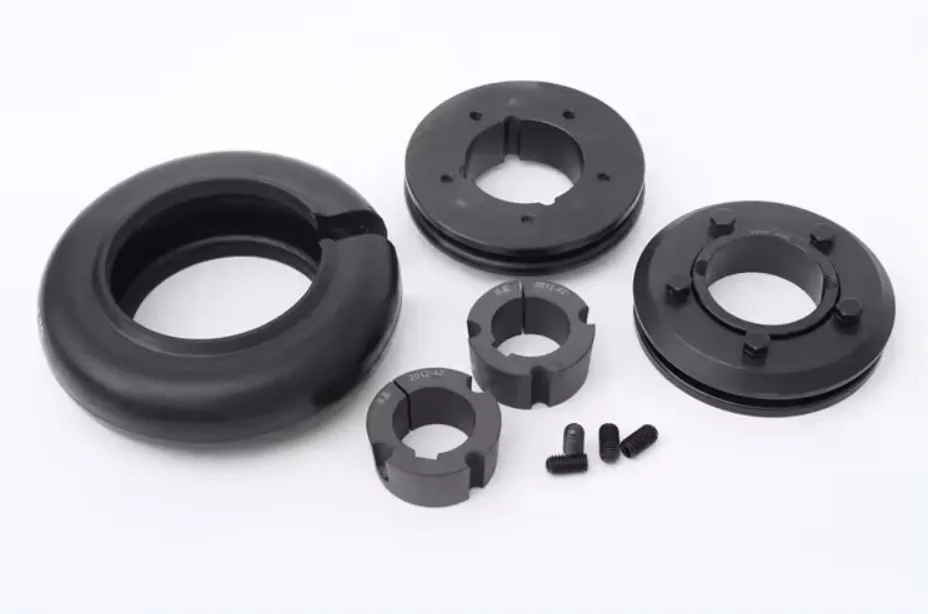rubber coupling for export services
Introduction
Rubber coupling is an essential component in various industries, providing efficient and reliable power transmission between two shafts. In this comprehensive article, we will explore the features, benefits, and applications of rubber couplings for export services.
1. Understanding Rubber Coupling
Rubber couplings are flexible couplings that connect two shafts, compensating for misalignment and dampening vibrations. These couplings consist of a rubber element and metal hubs, providing torsional flexibility while maintaining high torque transmission capacity.

2. Advantages of Rubber Coupling
Rubber couplings offer several advantages compared to other coupling types:
- High Misalignment Tolerance: Rubber couplings can accommodate angular, parallel, and axial misalignments, ensuring smooth and reliable operation.
- Vibration Dampening: The rubber element absorbs and reduces vibrations, minimizing the impact on connected equipment and improving overall system performance.
- Shock Absorption: Rubber couplings provide excellent shock absorption properties, protecting the connected components from sudden impacts and load fluctuations.
- Easy Installation: With their simple design and flexible nature, rubber couplings are easy to install and require minimal maintenance.
- Wide Range of Applications: Rubber couplings are widely used in various industries, including automotive, machinery, mining, and power generation.
3. How to Install Rubber Coupling
Installing rubber couplings correctly is crucial for their optimal performance and longevity. Follow these steps to install a rubber coupling:
- Ensure that both shafts to be connected are clean and free from any debris.
- Align the shafts properly, ensuring that they are parallel and coaxial.
- Slide the rubber coupling onto one shaft, making sure it is fully engaged with the hub.
- Repeat the same process for the other shaft.
- Tighten the coupling bolts evenly, following the manufacturer’s recommended torque specifications.
- Inspect the coupling for proper alignment and secure installation.

4. Selecting and Customizing Rubber Coupling
When selecting or customizing a rubber coupling, it is important to consider the following parameters and match them with the specific application requirements:
- Torsional Stiffness: Determine the required level of torsional stiffness based on the torque and speed of the connected shafts.
- Shaft Misalignment: Assess the expected misalignment conditions (angular, parallel, or axial) and choose a coupling that can effectively compensate for them.
- Temperature and Environment: Consider the operating temperature range and environmental factors to ensure the coupling’s material can withstand the conditions.
- Shaft Size and Type: Measure the shaft size and determine the appropriate coupling size and type for a secure and reliable connection.
- Application-Specific Requirements: Take into account any specific requirements of the application, such as space limitations or compatibility with other equipment.

About HZPT
HZPT is a modern enterprise located in Hangzhou, Zhejiang Province. With our core values of integrity, unity, progress, and innovation, we specialize in the research, development, production, and export of coupling products. Our business spans Asia, Europe, Africa, and North America, aiming to become a globally influential international group.
Our company offers a wide range of rubber coupling products, including drum couplings, pin bush couplings, serpent spring couplings, universal couplings, star couplings, expansion couplings, membrane couplings, and tire couplings. With a complete and scientific quality management system, as well as our own technology development and testing department, we hold certificates such as CQC, ISO, and CE. We are committed to providing excellent sales services and technical support to over a hundred cooperative enterprises, adhering to the principles of customer-centricity and mutual development.




